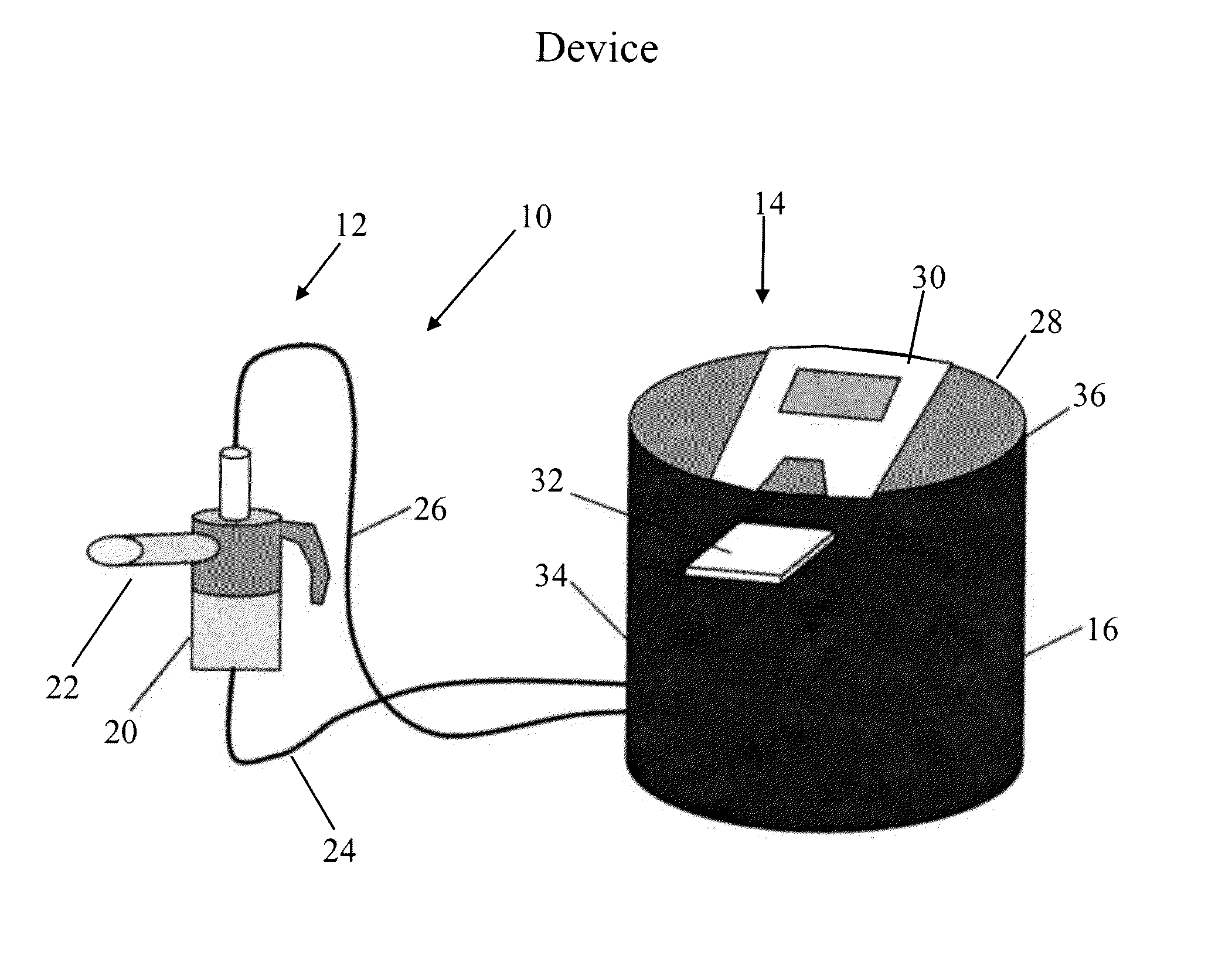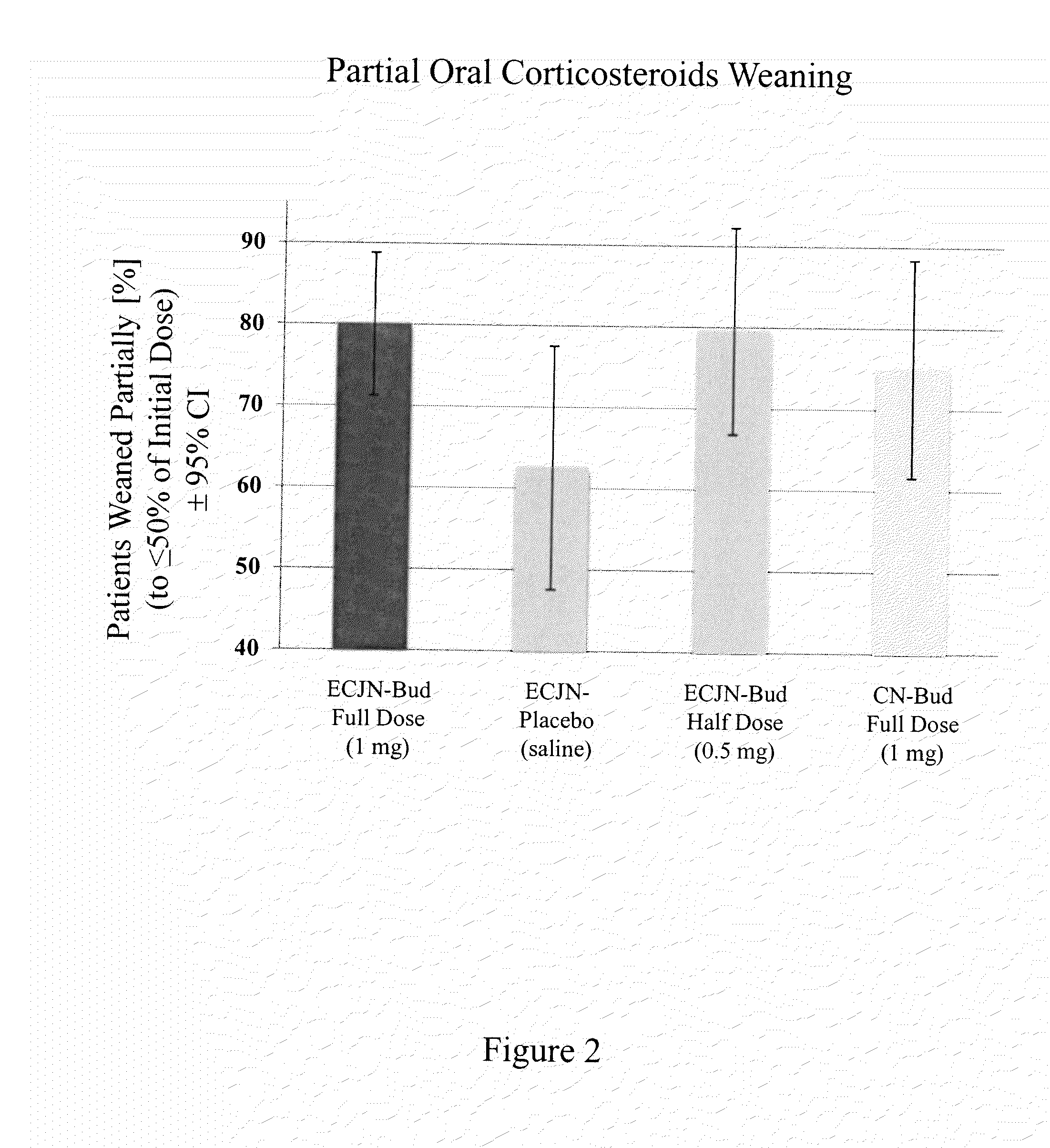Drug and Device Combination System for Flow and Volume Regulated Inhalation and a Method for Treatment of Severe Oral Corticosteroid-Dependent Asthma and Other Respiratory Diseases
a technology of flow and volume regulation and combination system, which is applied in the direction of inhalators, other medical devices, drug compositions, etc., can solve the problems of severe side effects, severe asthmatic patients, and severe breathing obstruction in asthmatic patients, and achieve the effect of increasing the efficacy of inhalable corticosteroid treatment and large clinical benefits
- Summary
- Abstract
- Description
- Claims
- Application Information
AI Technical Summary
Benefits of technology
Problems solved by technology
Method used
Image
Examples
Embodiment Construction
[0096]This invention concerns generally a drug and device combination system used in a method for inhalation therapy for treatment of severe and oral corticosteroid-dependent asthma and other respiratory diseases requiring a treatment with orally administered steroids. The inhalation therapy according to the invention results in the following benefits: complete weaning of more than 50% of all patients from oral corticosteroids; partial weaning to ≦50% of the initial oral corticosteroid dose in 80% of all patients treated with orally administered corticosteroid medication; substantial improvement in forced expiratory volume in one second (FEV1) achieved after 18 weeks of treatment; significant improvement of asthma Quality of Life measured by the Asthma Quality of Life Questionnaire(AQLQ); reduction of exacerbation of asthma symptoms; decrease in length and frequency of hospitalization of patients due to asthma episodes; and expectation of all these benefits to be achieved without an...
PUM
 Login to View More
Login to View More Abstract
Description
Claims
Application Information
 Login to View More
Login to View More - R&D
- Intellectual Property
- Life Sciences
- Materials
- Tech Scout
- Unparalleled Data Quality
- Higher Quality Content
- 60% Fewer Hallucinations
Browse by: Latest US Patents, China's latest patents, Technical Efficacy Thesaurus, Application Domain, Technology Topic, Popular Technical Reports.
© 2025 PatSnap. All rights reserved.Legal|Privacy policy|Modern Slavery Act Transparency Statement|Sitemap|About US| Contact US: help@patsnap.com



